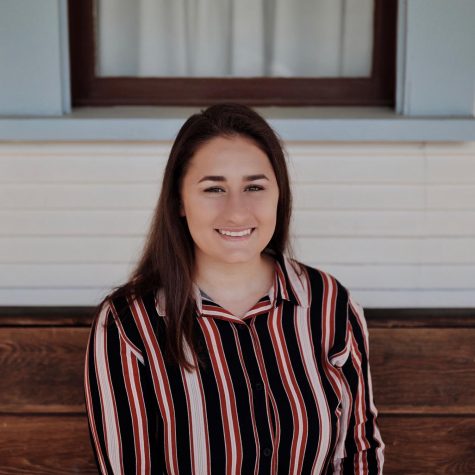Studying abroad is a beautiful way to broaden your horizons.
Experiencing the cultures and traditions practiced in another country, whether the people share your native tongue or not, is worth the adventure of going abroad.
Since I became a student at San Diego State I knew I wanted to study abroad, even though my journalism major with an emphasis in public relations does not require students to do so.
History and traveling internationally was something foreign to me, but something I wanted to explore further.
During the summer of 2019, I participated in the faculty-led study abroad program, “Journey to Medieval Spain Through Culture and History,” in Seville, Spain.
Throughout the three-week program, I completed GENS 450: History and Culture of Medieval Spain, a 3-unit course that fulfilled the upper division GE Explorations area C of the Humanities requirement.
Not receiving financial aid and being unaware of scholarship opportunities prior to my departure date made my process extremely difficult.
All throughout college we are assured there are scholarships available to students studying abroad. You hear that financial struggles shouldn’t hold you back from these kinds of experiences.
My question is, how are we supposed to study abroad when there’s no money available?
The faculty and staff at SDSU assert scholarship availability to prospective study abroad students. Students are also consistently told not to allow finances to hold them back from educational opportunities. These statements gave me confidence in my application and scholarship process.
I made many visits to the study abroad advisors, financial aid and scholarship advisors and tutors at the writing center to get guidance on my scholarship applications. I additionally reached out to some of my professors for letters of recommendation.
With this confidence, I applied to Associated Students Study Abroad Scholarship, an Independent Scholarship offered by the Office of Financial Aid and Scholarships, the Benjamin A. Gilman Scholarship, HI USA Travel Scholarship and the LAGRANT Foundation Undergraduate Scholarship.
I remember feeling my heart drop when I received a letter of denial from the Benjamin A. Gilman Scholarship.
I was almost certain I would receive the Gilman scholarship that would fund most, if not, the entirety of my summer study abroad program. As the days went by, I received more letters of denial or simply no notice at all.
I felt discouraged by scholarships and decided I needed to find a backup plan.
I opened a Go Fund Me page and was unsuccessful, even after I promoted it publicly.
I considered taking out a loan, but I didn’t want to deal with the pressure of more debt.
When the fee deadline got closer, I was eventually forced to pull from my savings account and solicit the help of family and friends. I’m fortunate to have had the cooperation of my family and close friends during this time. If I didn’t have that support, I’m not sure I would have studied abroad.
I don’t think scholarship programs realize that students have deadlines to pay study abroad fees as well.
And if they do realize it, then why aren’t they changing the system?
A fee of $3,360 may not seem like a lot for a summer study abroad program, but when you add deadlines, airfare —which range anywhere from $500-$1,500— passports,visas and spending money, it adds up.
I remember finding out I had received the SDSU Associated Students Study Abroad Scholarship while I was abroad and sitting in my homestay bed.
My award letter stated I would receive the scholarship a month after I returned from my program in mid-July.
Don’t get me wrong, I am thankful for this award, but really?
What is the point in receiving the scholarship after you’ve returned?
The fees had already been paid.
The reason we apply for these scholarships is because we need to pay the fees included in our program.
Scholarship programs should take this aspect into consideration and make a change for future students who are wanting to study abroad.
On a brighter note, the beauty of this program is that it was worth it.
Out of pocket payments are minimal while you’re abroad since housing, meals, laundry, excursions and activities are included.
The homestay aspect is beautiful.
You receive three home-cooked meals a day, laundry service once a week, a student roommate from your program, a private bedroom, a shared living space and bathroom and an opportunity to make connections with your Spanish families and locals.
Excursion to medieval sites throughout the cities of Seville, Cordoba and Granada were the biggest highlight of my trip.
Visiting the Alhambra in Granada, while appreciating its medieval architecture and getting a view of the Sierra Nevada mountains from a distance was a scene unlike any other.
Studying abroad in Spain exposes you to delicious Mediterranean dishes, a warm climate, flamenco dances and different cultures. The cities are rich in history dating back to the Middle Ages and beyond, which helps you observe the world with a new perspective.
If you’re a student looking to study abroad, do not feel discouraged.
By doing some research on different programs, you can choose a program that fits best for you.
Once you decide on a program, I would recommend planning ahead and having an alternative plan in case you don’t receive a scholarship by the time your fees are due.
Feel free to reach out to me if you have questions or need assistance in your study abroad process.
Karlene Sanchez is a senior studying public relations and health science. Follow her on Twitter @Karlene Sanchez.








